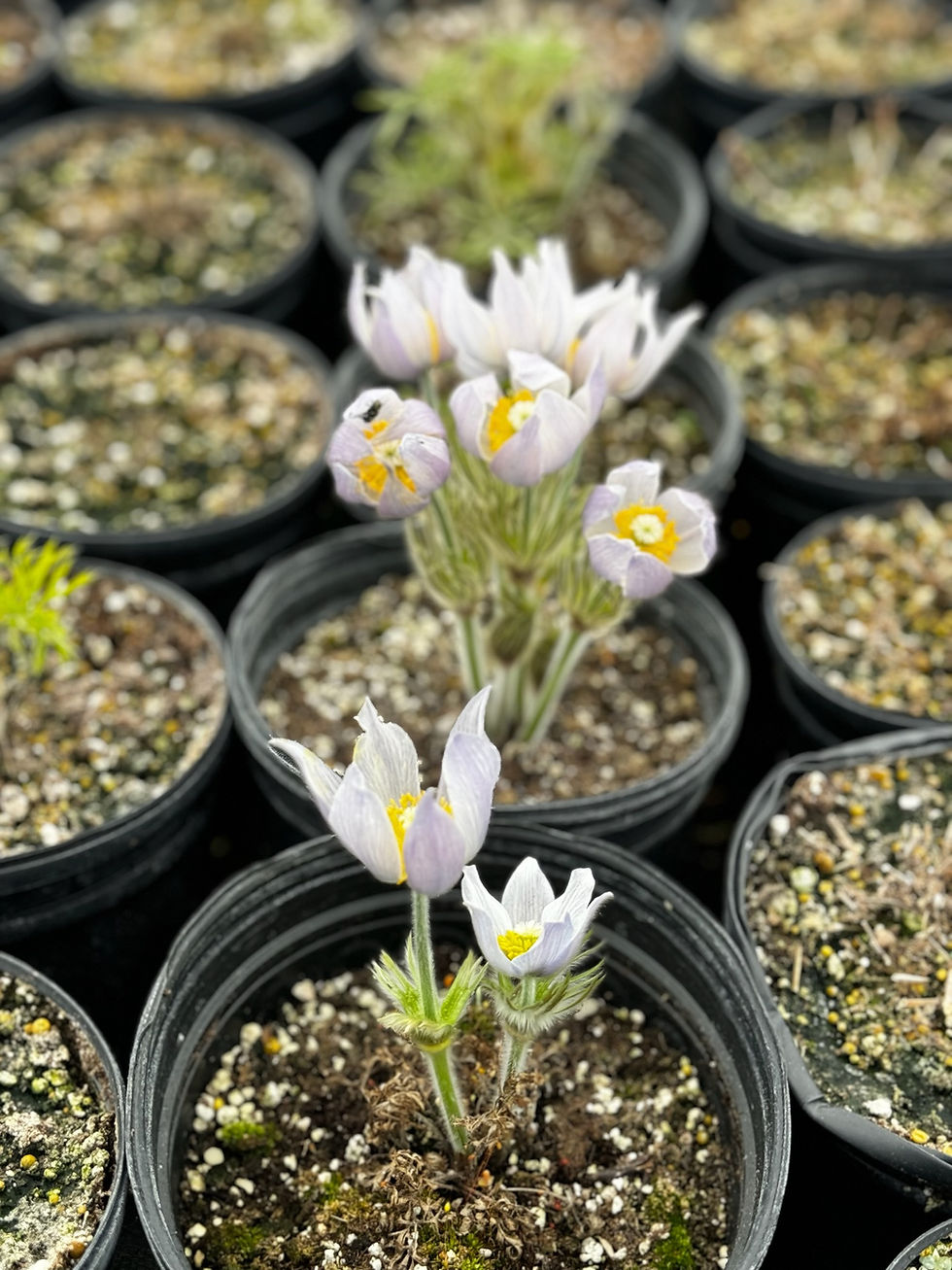All about Amorpha
- Aimee

- Jul 23, 2020
- 2 min read
All photos taken by GBNP, map provided by USDA NRCS
Also known as Leadplant, Amorpha canescens is a low growing, deciduous shrub in the legume family. It is widespread throughout the continental United States and is an important plant in our native, tall grass prairies for soil stabilization, pollinators, and nitrogen-fixation. It can be found in a variety of habitats from moist to mesic sites with a preference for well drained-soils in full sun.
In mid-late summer Leadplant releases a beautiful display of striking blue-purple flowers. It is a favorite of butterflies, moths, bees, beetles and other beneficial insects while it is generally avoided by deer (win-win!) It's deep tap-root allows it to survive prairie fires and times of drought. This long-lived perennial can be slow to emerge in the spring, so give it more time than you think you should. Note: Leadplant can completely die back after a harsh winter, but don't fret! Be patient and give it time.
Unlike other legumes, Leadplant only has one petal (the banner or standard.) Hence the genus name Amorphos greek for "formless" or "deformed." Don't listen to the Greeks, Leadplant! We think your fern-like foliage and spikes of bright flowers are gorgeous.
Many Native American tribes employed Leadplant for medicinal and customary uses. Tribes throughout the continental US made a tea from the leaves to cure a multitude of ailments. The Potawatomi drank the tea to treat pinworms, other intestinal worms and eczema. The Omaha powdered dried leaves and put them into cuts and open wounds to promote scab formation. "The Assiniboins and Sioux tribes made a moistened powder from the roots of leadplant and beeplant and then rubbed that on their clothes to gain 'the power to attract buffalo and to kill as many of them as he wants' (Kindscher, 1992). The common name 'buffalo bellows' was given to lead plant by some tribes because the blooming period coincided with the time of year that the buffalo were in rut and bellowing."
(NRCS Plant Guide Leadplant, https://plants.usda.gov/plantguide/pdf/pg_amca6.pdf)
Planting guide:
-Plant in fast-draining and/or sandy soil in full sun. A. canescens will tolerate partial shade, but expect a leggy plant with fewer flowers
-Mulch with gravel or pine needles (think drainage)
-Water regularly the first year it is planted to get it established, then water infrequently but deeply in subsequent seasons
-Prune hard mid spring, allow to stand throughout winter
-No fertilizer necessary, it's a nitrogen-fixer
Plant Buddies also available from GBNP:
-Blue grama, Bouteloua gracilis
-Little Bluestem, Schizachyrium scoparium
-Prairie dropseed, Sporobolus heterolepis
-Sideoats Grama, Bouteloua curtipendula
-Dotted Blazing Star, Liatris punctata
-Prairie Smoke, Geum triflorum
-Purple Prairie Clover, Dalea purpurea
-White Prairie Clover, Dalea candida
... just to name a few :)
Sources:














Comments